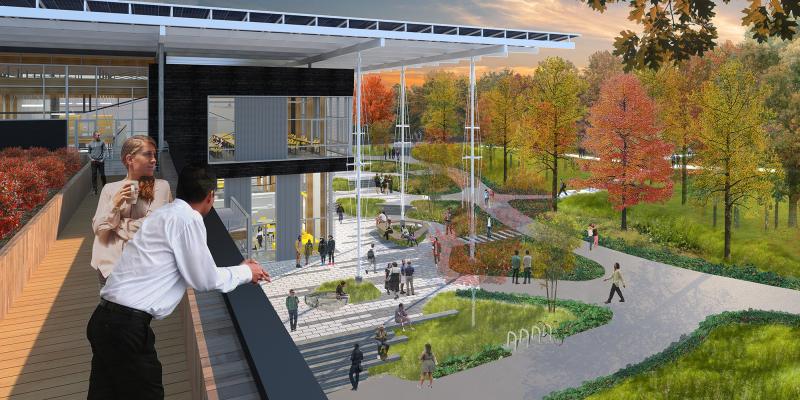A Living Building Project Journey, Part-8
The Ripple Effect: Recent Partner Activity

As we begin to develop and resolve the finer details during the design development phase of the Georgia Tech Living Building project, our project team and process are constantly brimming with ideas and activity. The goal of the Living Building at Georgia Tech has been not just to create the most environmentally advanced education and research building ever constructed in the Southeast, but for the project to be a catalyst for sustainability in the region. This post highlights some of the activities of project partners to promote sustainability beyond the campus of Georgia Tech.
It’s never just about the building
Dennis Creech, a fund advisor and a member of the leverage team at The Kendeda Fund, eloquently sums up some finer points about the Living Building Challenge (LBC) certification in a recent interview.
There are a lot of words we use to describe a building standard that goes beyond doing less harm and aspires to actually improve the environment — restorative, regenerative. That ambition is one part of the Living Building Challenge that’s very admirable.
But, in my mind, there’s something else just as significant: It’s holistic. It’s not just about the environment in isolation, without considering its connection to people. I think the Living Building Challenge recognizes that to be restorative to the planet, it has to address the needs of people.
Read the full interview on Kendeda’s Living Building Chronicle.
Miller Hull Seattle Studio Now Living Building Challenge Petal Certified
Miller Hull, the design partner of LAS on the Georgia Tech Living Building project, recently achieved Petal Certification under the Living Building Challenge. They transformed 14,000 sf of their own office space in the historic Polson Building in Pioneer Square, Seattle, to meet and exceed the requirements of Place, Health & Happiness, Materials, Equity and Beauty Petals. Meeting the requirements of at least three petals with one of them being Energy, Water, or Materials is necessary for pursuing Petal Certification.
Read more about their strategies and metrics on Miller Hull’s website.
Net-positive in Atlanta’s heat
Our MEP design partner, PAE Consulting Engineers, rightly points out the challenges posed by Atlanta’s weather and the iterative modeling process being employed to design a net-positive energy building.
For Georgia Tech, designing to net-positive energy demands significant planning and design team coordination. To accomplish this, designers first prioritized cooling- and heating-load reduction options to minimize the energy needed and allow passive operation for longer periods of time.
Read the full article by Marc Brune and David Mead on Daily Journal of Commerce’s website.
Advocacy for human powered living
Promotion of wellness is a recurring theme for the LBC. The “Human Powered Living” imperative that falls under the plan’s ‘Place’ section calls for a design that promotes physical activity though biking, walking, and stair usage instead of reliance on cars and elevators for mobility. One other requirement under the same Imperative is the “advocacy in the community to facilitate the uptake of human-powered transportation.”
Georgia Tech is a natural fit for this advocacy requirement. By virtue of the creation of a Bicycle Master Plan and infrastructure improvements such as new bike lanes, additional bicycle storage, and quick repair stations, Georgia Tech’s commitment to human powered living predates its conception of the Living Building project. Tech’s plan and growth goals are integral to City of Atlanta’s Cycle Atlanta Phase I and II plans.
Read more about Georgia Tech’s Bicycle Master Plan and related efforts on its website.
Advocacy for building product transparency
As design teams in the Southeast ratchet up their materials research and vetting processes, the supply side has to reciprocate with transparency and the right tools to help with decision making. The local sustainability non-profit Southface Energy Institute has formed an industry council to bring all the stakeholders together.
Read more about Southface’s industry council initiative here.
Funded through a private grant from The Kendeda Fund, the Living Building at Georgia Tech is expected to become a Living Building Challenge 3.1 certified facility – the built environment's most rigorous and ambitious performance standard. The project’s design and build partners include architects Lord Aeck Sargent in collaboration with The Miller Hull Partnership, construction manager Skanska and design team consultants: Newcomb & Boyd, PAE Consulting Engineers, Uzun + Case, Biohabitats, Andropogon and Long Engineering.





No comments yet